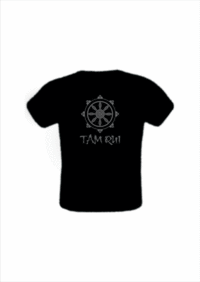Hambo Lama Itigilov
From Buddha World
Dashi-Dorzho Itigilov (1852–1927) was a Buryat Buddhist lama of the Tibetan Buddhist tradition, best known for the lifelike state of his body, which is not exposed to decay.
Biography
Itigilov was born in 1852 and began his religious education at the age of 16. He studied at the Anninsky Datsan (a Buddhist university in Buryatia, of which only ruins remain), earning diplomas in medicine and philosophy. At that time he wrote an encyclopedia of pharmacology. In 1911, he was appointed the 12th Pandido Khambo Lama (as the head of Russian Buddhists is styled), at which post he inaugurated the period of a Buddhist revival among Buryats. Between 1913 and 1917, Itigilov was prominent in the spiritual life of Imperial Russia. He took part in the Tercentenary celebrations of the House of Romanov and opened the Gunzechoyney datsan, the first Buddhist temple in St. Petersburg and indeed in Europe. The tsar had him invested with the Order of St. Stanislas on 19 March 1917. During the First World War Itigilov presided over the society of "Buryat brothers", an organization helping the Russian army with money, provisions, clothes, and medicaments. He also helped set up a number of hospitals, with lama doctors helping wounded soldiers. For his charitable activities Itigilov was awarded the Order of St. Anna. In 1926 Itigilov advised the Buddhist monks to leave Russia, since "the red teaching was coming to land", himself choosing to remain in the country. A year later, aged 75, he asked other lamas to begin meditation ceremonies and funeral rites, since he said he was about to die. Lamas did not want to perform this meditation because Itigilov was still alive. As a result, Itigilov began to meditate alone until other lamas joined him and soon his body ceased to breathe.
Life after death
Itigilov left a testament asking to be buried as he was at the time of his death, sitting in lotus posture. According to his wishes, his body was put into a pine box and interred at a bumkhan (a graveyard for the lama burials) in the locality of Khukhe-Zurkhen (Dark-blue Heart in Buryat language). One of the testament clauses stipulated that his body should be exhumed by other monks within several years. This clause is interpreted by enthusiasts to demonstrate Itigilov's precognisance of his body's incorruptibility.
In 1955 and in 1973, Itigilov's body was examined by Buddhist monks, who were astonished to observe no signs of physical decay. They were too reluctant to divulge their finding to the atheistic authorities of Communist Russia and the body remained in situ until 2002. On 11 September 2002 Itigilov's body was eventually exhumed in the presence of the leaders of the Buddhist Traditional Sangha of Russia. The body was transferred to Ivolginsky datsan (a residence of today’s Hambo Lama) where it was closely examined by monks and also by scientists and pathologists. The official statement was issued about the body – it was "in the condition of someone who had died 36 hours ago", very well preserved, without any signs of decay, with whole muscles and inner tissue, soft joints and skin. Although Itigilov's body was never embalmed or mummified, it is said that his corpse still bleeds if punctured. The Buddhist monks approach him as a living person and shake hands with him. Some devotees even claim that Itigilov is still alive, only immersed in a hibernation- or nirvana-like state. "Buddhists say that only the most advanced masters can fall into some particular condition before death and purify themselves so that his dead body could not decay". Some scientists explain the state of Itigilov's body by abnormal quantities of bromine discovered in tissues and muscles. On 23 April 2003, the Buddhist conference recognized the body of Dashi-Dorzho Itigilov as one of the sacred Buddhist objects of Russia. At that time, they laid the foundation stone for a temple entitled Itigel Khambyn ordon and consecrated to Dashi-Dorzho Itigilov. As of 2005, Itigilov's body was kept outdoors, in contact with other people, without preserving any temperature or humidity regimens.







 Русский
Русский
